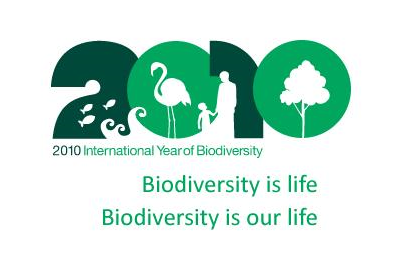
 The Negev desert is a region that is located in the southern part of the state of Israel.
The Negev desert is a region that is located in the southern part of the state of Israel. It is shaped like an inverted isosceles triangle, an area of \u200b\u200bsome 13,000 km ², with the summit in the Red Sea, bordered to the east with Jordan, with Egypt in the west and north of the Gaza Strip (far north-west ), the central regions of Israel and the Dead Sea (the north-east).
view Zionism as a resource center, the Negev has been under development since the founding of the State of Israel, with the establishment of chemical industries in Be'er Sheva, Sdom, Ramat Hovav and Zin, and agricultural development Air in the valley that connects the depression of the Dead Sea with the Red Sea coast.
was the site of ancient copper mines of Timna, dating back to the Kingdom of Israel and now a tourist destination.
Careful use of water policy has allowed the establishment of agricultural settlements in arid areas. One example is the kibbutz of Sde Boker, located in the center of the Negev in the ancient Nabatean city of Avdat, which was home to one of the founders of the modern state of Israel, David Ben Gurion, after his retirement from active political life.
the extreme southern tip of the region, overlooking the Red Sea, lies the port city of Eilat.
Nevertheless, the Negev has had its share of history: Abraham chose to put his home in Be'er Sheva in the places chosen by them during the Nabatean caravan trade of their valuable assets.
For this and many other reasons, the Negev has become one of the most important places for tourism.
The more diverse and different peoples lived in the Negev: the nomadic peoples like the Canaanites to the Philistines, Edomites, the Byzantines, the Nabataeans to get up to the Israelis today. The economy of these populations was based mainly on sheep farming and agriculture for adding a second stage in the business.
The story is particularly affascinante.I Nabataean Nabataeans were the lords of the desert in which established a location known as "The Way of Spices." Camel caravans crossed this route carrying spices, perfumes and salt from Yemen to the east of the port city of Gaza.
Along the way places were built for the rest of the caravan and it is still possible to see the witness in places like Ovdat and Mamshit.
Modern settlements in the Negev began about 100 years ago, when some communities chose to settle here. They were joined by 11 other settlements whose founding members built the first houses in one night.
After the founding of the State of Israel David Ben Gurion, who was elected to the prima volta come Primo Ministro d’Israele, promosse gli insediamenti nel Negev e dopo che lui stesso si stabilì nella località di Sde Boqer molti altri insediamenti si svilupparono.
Il Negev è considerato un deserto per la scarsità di precipitazioni che qui cadono ogni anno e cioè meno di 200 millimetri annuali ed è diviso in differenti regioni cominciando dalla depressione di Ber Sheva -Arad nel nord, fino alla catena montuosa nel centro ed Arava ed Eilat nel sud.
Sebbene il Negev sia arido per la maggioranza dei giorni dell’anno, le sue distese desolate ed i letti dei suoi fiumi asciutti, qui la natura è davvero sorprendente.
In inverno, nonostante la piccola quantità di acqua, il Negev è ricoperto di fiori meravigliosi, tra cui splendidi anemoni rossi.Quando vi sono forti venti essi possono causare impressionanti rigonfiamenti all’interno dei letti dei fiumi.
Oggi il Negev è la porta verso il deserto. Esso offre incantevoli angoli naturali, luoghi di carattere storico archeologico, primavere e le testimonianze di differenti composti agricoli.
Il turismo nel deserto è un settore di sviluppo e molti turisti ne esplorano le distese a piedi, in bicicletta o utilizzando ogni genere di veicolo via terra.
Il Negev è anche una scatola di sabbia e di sogni, e al mattino ci appare da lontano, sul giallo del deserto, l’ultima versione della fantasia scientifica israeliana on the future: a large round structure, a kind of umbrella semirovesciato standing on steel legs.
Near the roundabout there is a linear structure like a long snake of a hundred meters, which concentrates the sun and moves in harmony with it, focusing her multiplied on a huge heat pipe in which it moves a liquid that turns energy.


 In biodiversity, also taking its cue from the report of the Wildlife Conservation Society, which puts the spotlight on mammals, amphibians, reptiles and birds considered "Critically Endangered" by IUCN, the International Union for Conservation of Nature, we wanted to draw a sad list of the species in the world that face extinction in just a few years because of deforestation and the resulting loss of habitat along with pollution, both industrial and agricultural.
In biodiversity, also taking its cue from the report of the Wildlife Conservation Society, which puts the spotlight on mammals, amphibians, reptiles and birds considered "Critically Endangered" by IUCN, the International Union for Conservation of Nature, we wanted to draw a sad list of the species in the world that face extinction in just a few years because of deforestation and the resulting loss of habitat along with pollution, both industrial and agricultural. 










 The National Geographic Society (NGS ), whose headquarters are is
The National Geographic Society (NGS ), whose headquarters are is 








